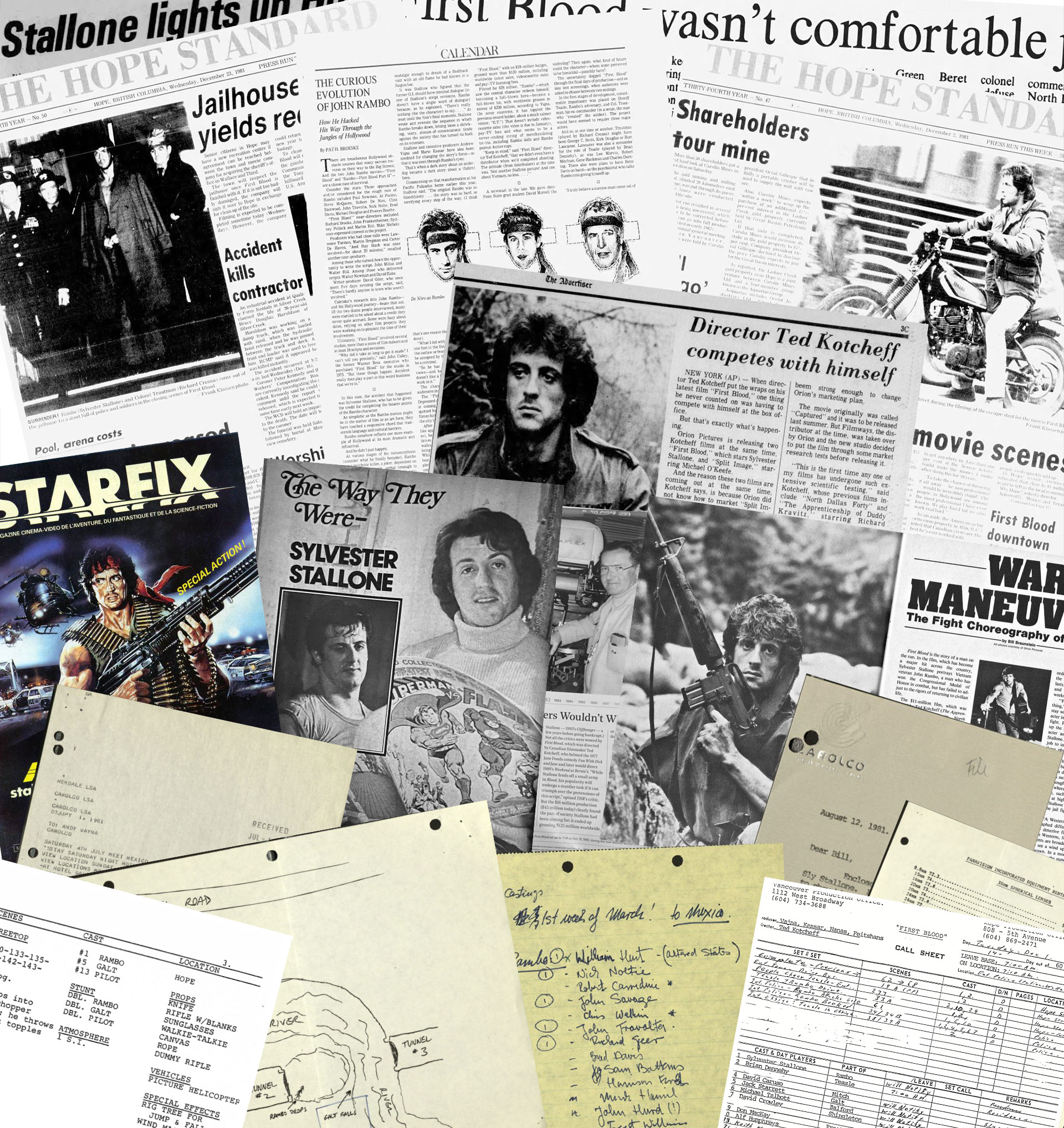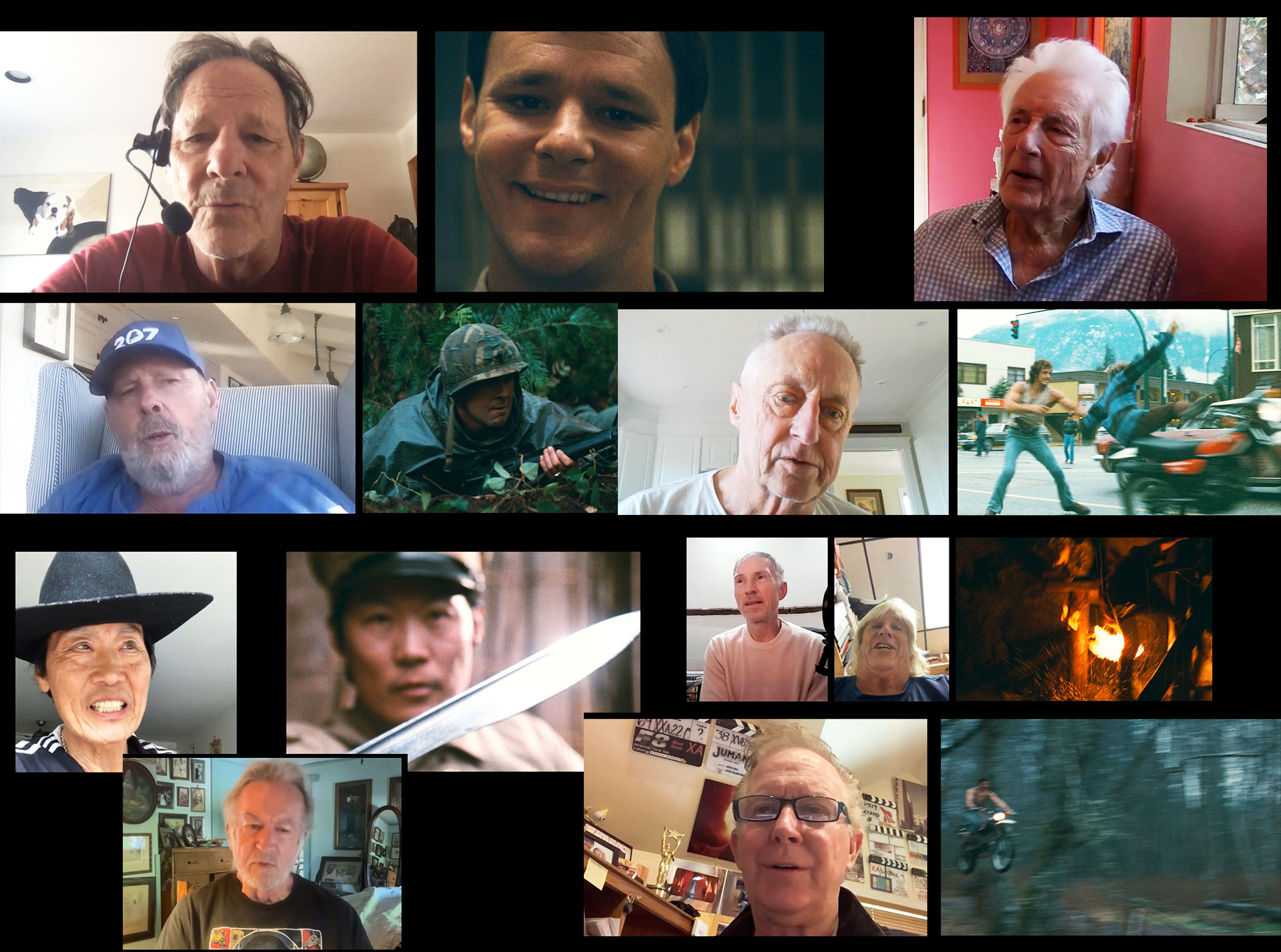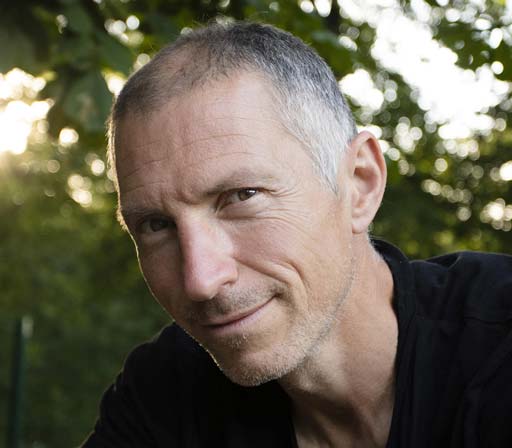Exclusive interviews
It was essential for me to speak with those who were directly involved in the making of the film. I reached out to everyone still alive who had been part of the production. Through this process, I conducted more than thirty interviews, collecting unique testimonies from actors, stunt performers, technicians, extras, the film’s military consultant, and even the emergency doctor on set.
I was absolutely honored and thrilled to speak with so many people involved in the making of First Blood. They were all incredible—not only for agreeing to talk to me but also for making the effort to recall, in detail, what they experienced on set more than 40 years ago, answering very precise questions and digging into specific moments of the production. Some interviews lasted more than four hours. Absolutely memorable conversations!
Among them were actors such as Chris Mulkey (Ward), Patrick Stack (Captain Morgen), and Grandmaster Stephen Chang (Viet Cong Commander). I also spoke with Diamond Farnsworth, Stallone’s stunt double on the film, and Jacob Rupp, the stuntman whom Stallone knocks off the motorcycle. There was also Jack Gill, who doubled Stallone in certain motorcycle sequences, as well as the film’s brilliant editor, Thom Noble (who, by the way, confirms that the supposed 3-hour cut Stallone mentions never existed). I even had the chance to interview Chuck Tamburro, the helicopter pilot, William Stout, the storyboard artist, and many more…






